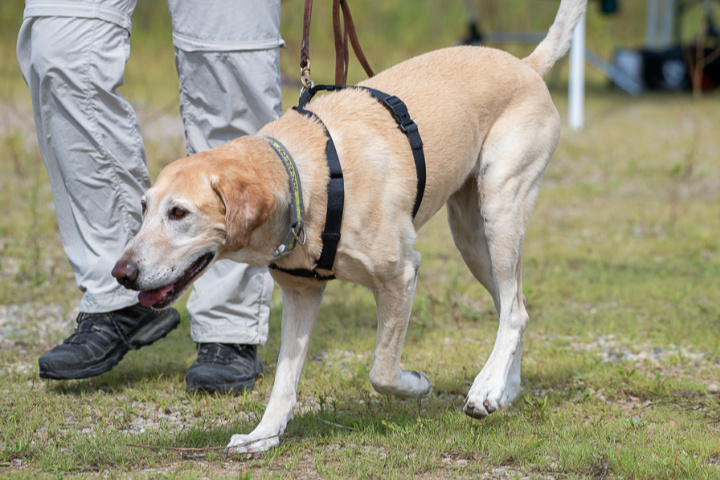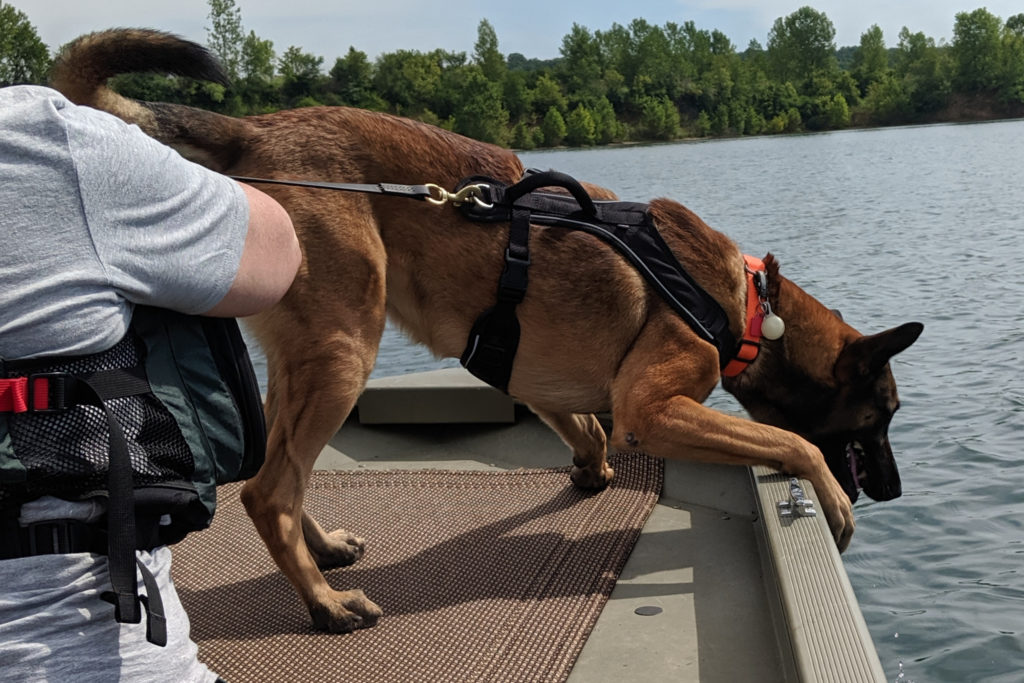Part 4: Blue-Green Algae & Your Search Dog
In the final installment of our 4-part series on blue-green algae, CFTE Founder and K9 Handler Deana Hudgins shares practical tips for keeping your K9 partner safe while you continue to serve your community and respond to callouts.
What do we know about blue-green algae?
Now you know what blue green algae is, why it’s harmful to your dog, and how to decontaminate your dog if exposure is suspected.
We know that search and rescue is inherently dangerous and it is our responsibility to carry out our duties as effectively and safely as possible. People will continue to have boating accidents, autistic children will wander away from home and be drawn to water. These scenarios and many more like them will continue to play out across the country whether or not Harmful Algal Blooms (HABs) are present.
So how do we perform our duties and still keep our K9 partners safe?
What can you do before arriving on scene?
- Get as much intel about the area as possible and use the resources shared in Part 1 of this series to determine if the area you will be searching has reported contaminated water. Remember this only applies to public lands.
- Find out where the nearest 24 hour emergency veterinary hospital is to the search area, so if you suspect exposure or see any of the symptoms outlined in Part 2, you can immediately act.
- Pack the appropriate gear to keep your dog safe and endure you are able to decontaminate your dog (as described in Part 3) in the event of exposure: long line, harness, shampoo, peroxide, activated charcoal.
What can you do once you arrive on scene?
- Ask the Agency Having Jurisdiction (AHJ) for a detailed map of the areas to be searched. Highlight each area that contains bodies of water.
- Ask local resources and landowners if they are aware of any contaminated waters on their property or surrounding properties.
- Discuss your concerns about potential contamination and the risks of exposure with the AHJ.
- Develop a strategy to allow the area to be searched while maintaining the safety of your canine. Explain to the AHJ that this may limit the thoroughness of the search and lower the probability of detection.
- Confirm that there is clean water available to decontaminate your dog should an exposure occur and follow the recommendations in Part 3.
- Establish a procedure to evacuate your dog to emergency care in the event of a possible exposure.
- If there is a confirmed HAB, are there other SAR assets that can be used to safely search the area instead of endangering your dog (e.g. sonar, underwater cameras, drones)? Can the search be delayed until a time of year when HABs are not present (cold case)?
What can you do when the sector may have HABS and you're searching near the water?
- Work your dog on lead to prevent them from entering the water.
- Remember that HABs can be washed up on shore and still pose a fatal danger if consumed, even though they are not in the water.
- Dogs seek out water to cool down and hydrate during long searches and in hot weather. Make sure you are carrying plenty of fresh water for your K9 and that you are offering it frequently.
- Make sure to take frequent breaks to allow your K9 to cool down. Bring (or ask the AHJ to set up) a baby pool at the base so that you can cool your partner between work cycles.

What can you do when the sector may have HABS and your searching from a boat?
- Lift/carry the dog into and out of the boat if you must launch from shore.
- Keep the dog leashed in the boat so that you can prevent jumping into the water or drinking/tasting the water.
- Do not allow your dog to lick your pants or boots. You may be carrying the toxins from walking through contaminated water.

You are your dogs advocate, and while we all assume a certain level of risk every time we respond to a call out, it is your duty to SPEAK UP if you can not complete the task safely. You are not going to help the missing individual or the AHJ if you knowingly put your dog into a position where they are exposed to HABs. While it may be uncomfortable, you are within your right to turn down an assignment to protect yourself and your partner.
The Center for Forensic Training and Education is committed to providing K9 teams of all skill levels with the highest quality training in safe environments. To learn more about our in person training opportunities, including our 2020 water recovery workshops, go to https://thecfte.com/training/.
Be the first to know about new training opportunities!
Join our email list so we can share information about new workshops and online courses with you!
 Deana has a wealth of experience in the field of Search and Rescue and since 2001 has responded to hundreds of missing person searches for local, state and federal agencies. She is the Executive Director and a Founding Member of Ohio Search and Recovery
Deana has a wealth of experience in the field of Search and Rescue and since 2001 has responded to hundreds of missing person searches for local, state and federal agencies. She is the Executive Director and a Founding Member of Ohio Search and Recovery
Canines and also a Canine Search Specialist for FEMA Ohio Task Force One working both human remains detection and live find canines. Deana is a trainer and lead evaluator, and frequently consults as a subject matter expert for large scale training exercises and cases providing guidance in search strategy and planning, resource management, mapping and data collection. Deana has worked for The Ohio State University since 2001 and has focused on GIS and water quality monitoring and analysis in agricultural watersheds.

